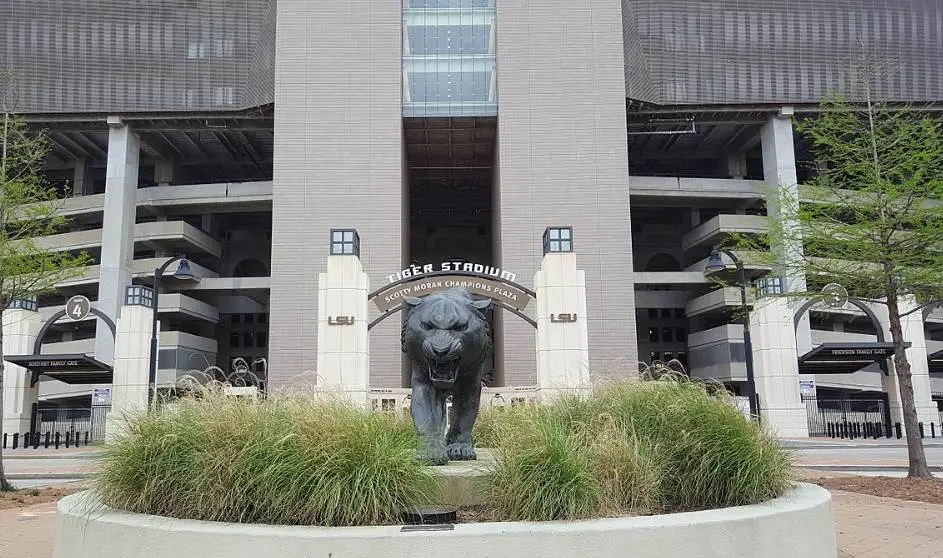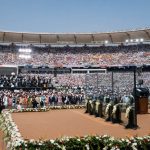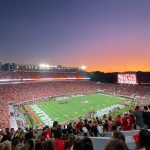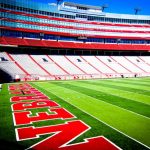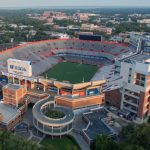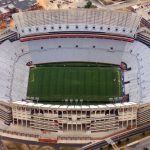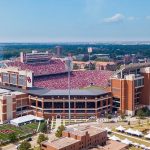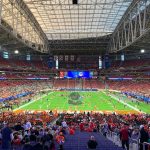One of the largest stadiums in the US can be found on the campus of a university in Baton Rouge, the capital city of Louisiana.
This immense stadium had humble beginnings and was expanded several times throughout its history. These projects transformed it into one of the biggest stadiums in the world.
Let’s take a closer look at some of the most interesting facts about Tiger Stadium in Baton Rouge, a historic sports venue in Louisiana with some fascinating stories to tell.
1. It’s located in the southern part of Baton Rouge
Tiger Stadium is a huge stadium in Baton Rouge, a city on the eastern banks of the Mississippi River in the southern part of the United States.
It’s located on the campus of the LSU or “Louisiana State University” just south of the city center.
Baton Rouge is the state capital of Louisiana but is a relatively small city compared to other state capitals in the United States.
It has a population of just over 227,000 inhabitants and over 870,000 people live in the Greater Baton Rouge Metropolitan area.
This is the second-largest in Louisiana after New Orleans which isn’t too far to the southeast.
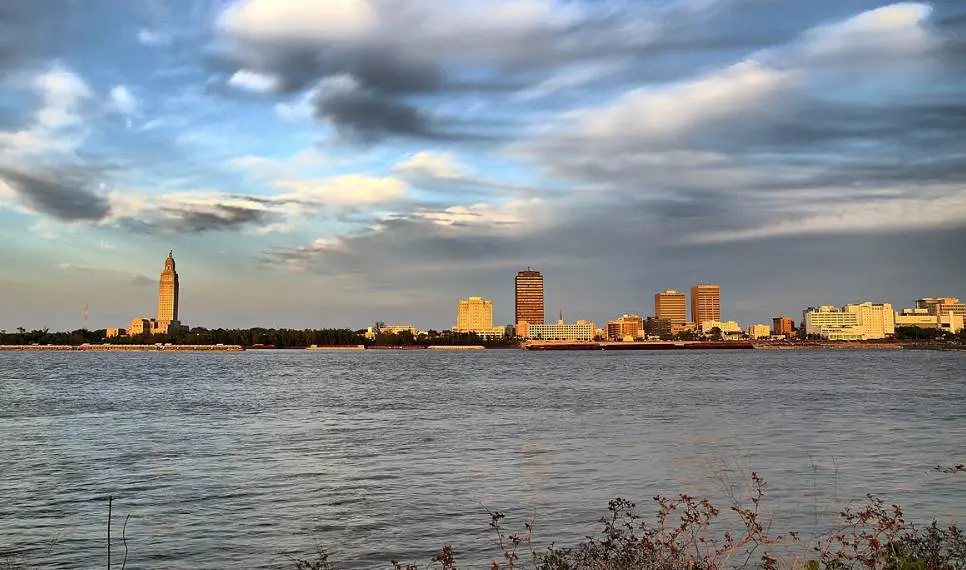
2. It’s the home venue of the LSU Football team
The stadium serves as the home venue of the Louisiana State University Tigers football team, commonly referred to as the LSU Tigers.
The football team was established when American academic and chemistry professor Dr. Charles E. Coates (1866-1939) assembled a number of students to form a football team.
This happened in 1893 and the Tigers played their first season that same year. Coates coached just one game and the Tigers lost 34–0.
Luckily, things started to improve rather fast as they beat Natchez Athletic Club 26–0 in 1894, their first-ever victory.
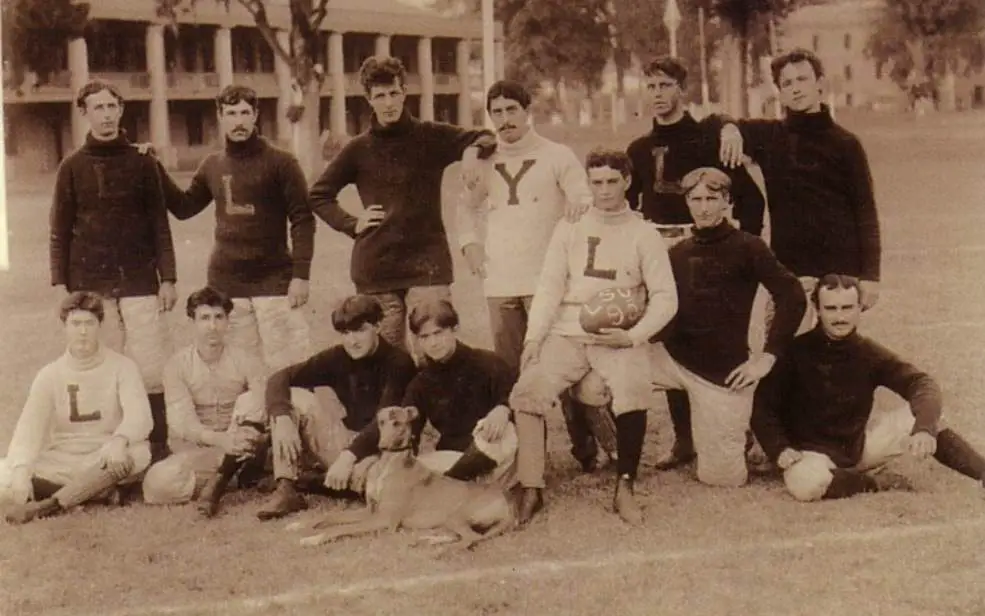
3. It replaced the old stadium of the LSU Tigers in 1924
The Tigers didn’t play their first games in the location of the current Tiger Stadium but at State Field.
This became the home stadium of the Tigers in 1893 and remained as such until they moved to the current stadium in 1924.
State Field was located at the old campus of the Louisiana State University which was located in downtown Baton Rouge.
This area was completely repurposed in the early 1930s because it’s here that the Louisiana State Capitol was constructed between 1930 and 1932.
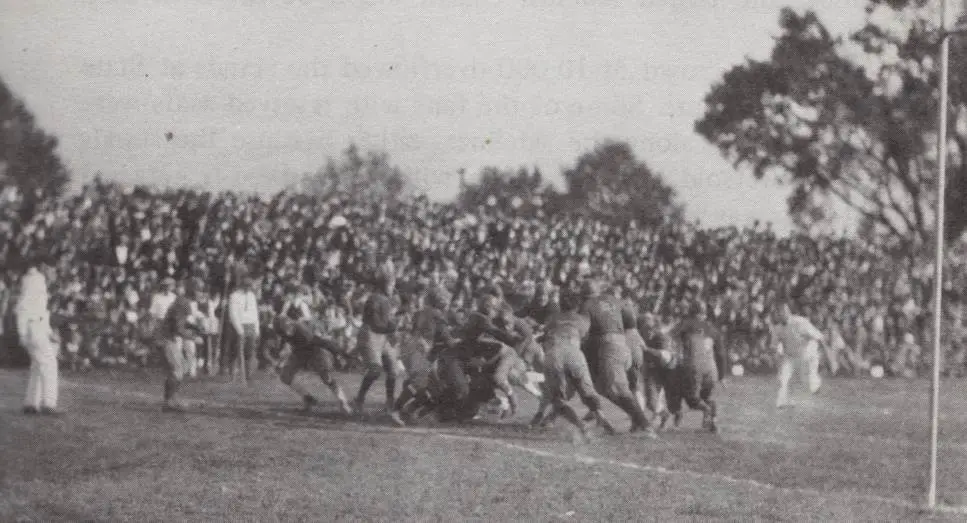
4. The stadium was transformed into a horseshoe in the year 1936
The stadium had humble beginnings and could only hold 12,000 people upon completion in 1924. That’s the equivalent of the lower sections of the grandstands on both sides.
10,000 seats were added in 1931 and it wasn’t until the year 1936 that the stadium got a horseshoe-shaped design. 24,000 seats were added to the north and south zones that year.
Yes, Tiger Stadium has come a long way since it hosted its first game during the Roaring Twenties!
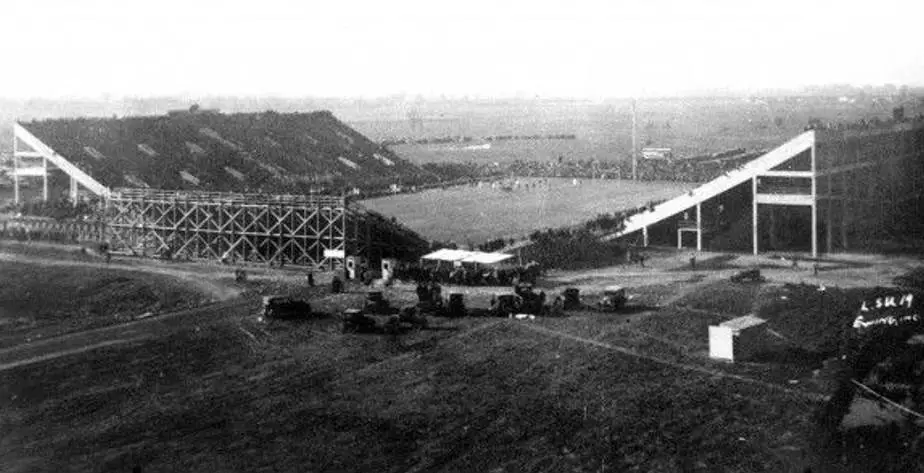
5. It became the largest on-campus stadium in the SEC in the early 1950s
Another major expansion phase was completed in 1953 when 21,000 seats were added to the south end zone.
This gave the stadium a distinctive bowl design and more importantly, a stadium that could seat an amazing 67,720 spectators.
This turned the stadium into the largest on-campus stadium in the SEC, a record it held until Neyland Stadium was expanded to seat 80,250 people in 1976.
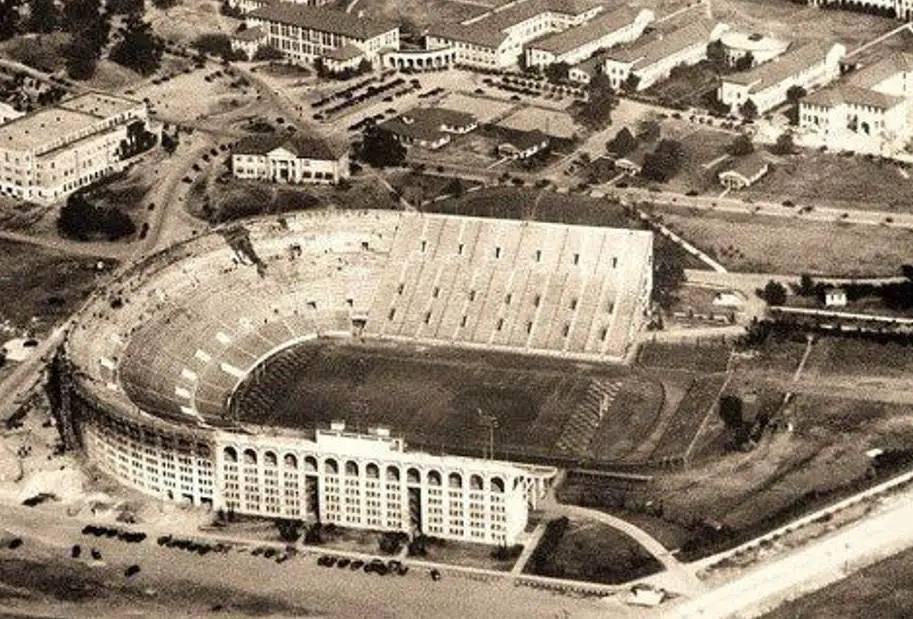
6. There were student dormitories below the stands until the 1980s
One of the most interesting facts about Tiger Stadium is the fact that Athletic Director T.P. “Skipper” Heard used a trick in order to increase the stadium’s capacity
Not too long after the stadium was completed in 1924, the director learned that about $250,000 was reserved to construct new dormitories on the LSU campus.
He suggested integrating these right into the stadium on both sides. This allowed each stand to be elevated and add 10,000 seats to the stadium.
These dormitories were used by students until the 1980s and continued to serve as storage space and offices until the 2010s.
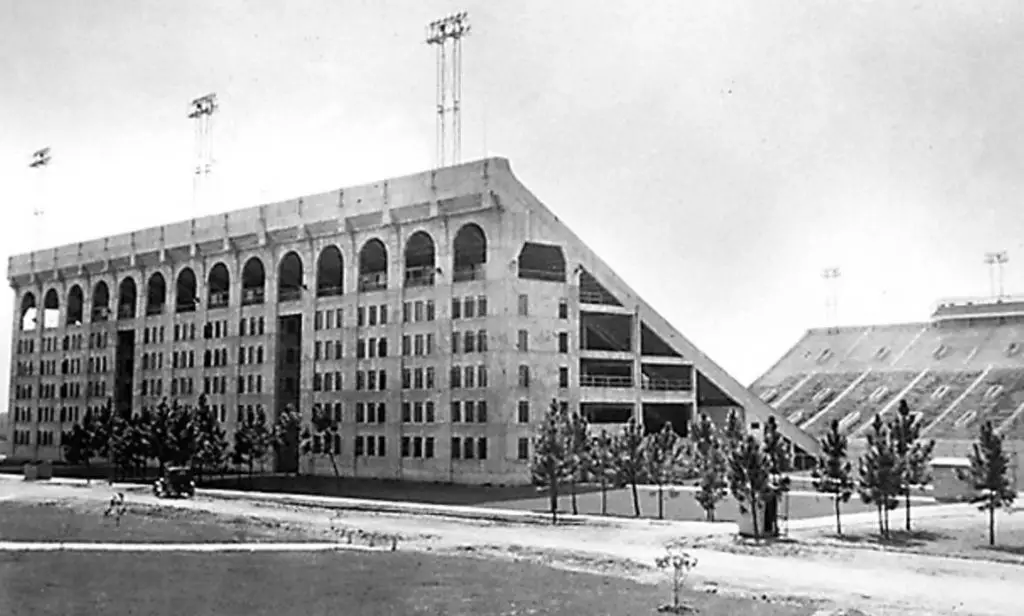
7. It became the 8th-largest stadium in the world in 2014
The stadium was expanded several times more in the 1970s and 1980s and reached a capacity of 80,150 spectators by the end of the 1980s before being lowered to 80,000 in the 1990s.
The upper deck on the east side was completed in 2000 and added an additional 11,600 seats. The final expansion phase was confirmed in 2012 and $80 was reserved for the south end zone project.
This not only brought the capacity to 102,321 spectators but also added thousands of suites to the stadium.
Today, it’s the 6th-biggest stadium in the United States and the 8th-biggest in the entire world.
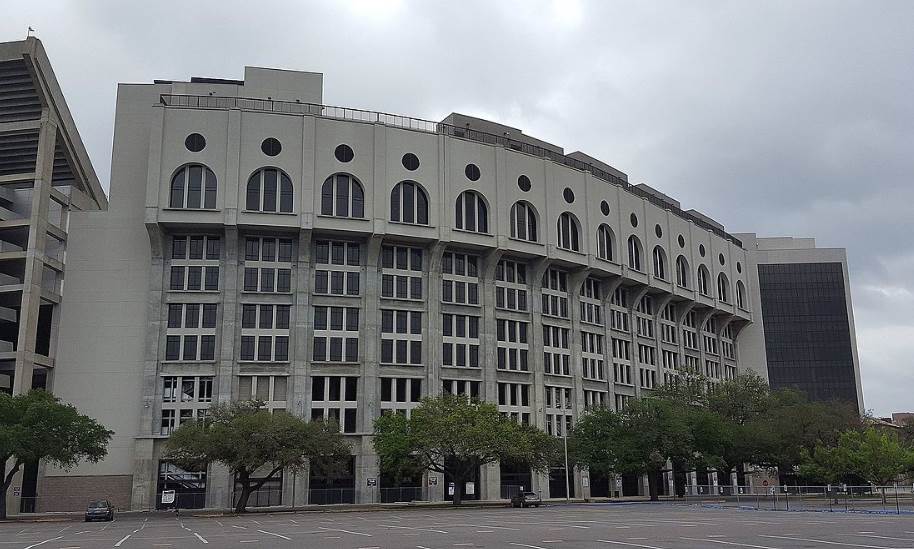
8. Tiger Stadium is credited with being the loudest in the country
The nickname of Tiger Stadium is “Death Valley,” a reference to the fact that it’s considered to be the loudest and most intimidating stadium in the United States.
Legendary Alabama head coach Bear Bryant once mentioned that:
Baton Rouge happens to be the worst place in the world for a visiting team. It’s like being inside a drum.
He’s just one of many people who have referred to the fact that LSU fans are really loud.
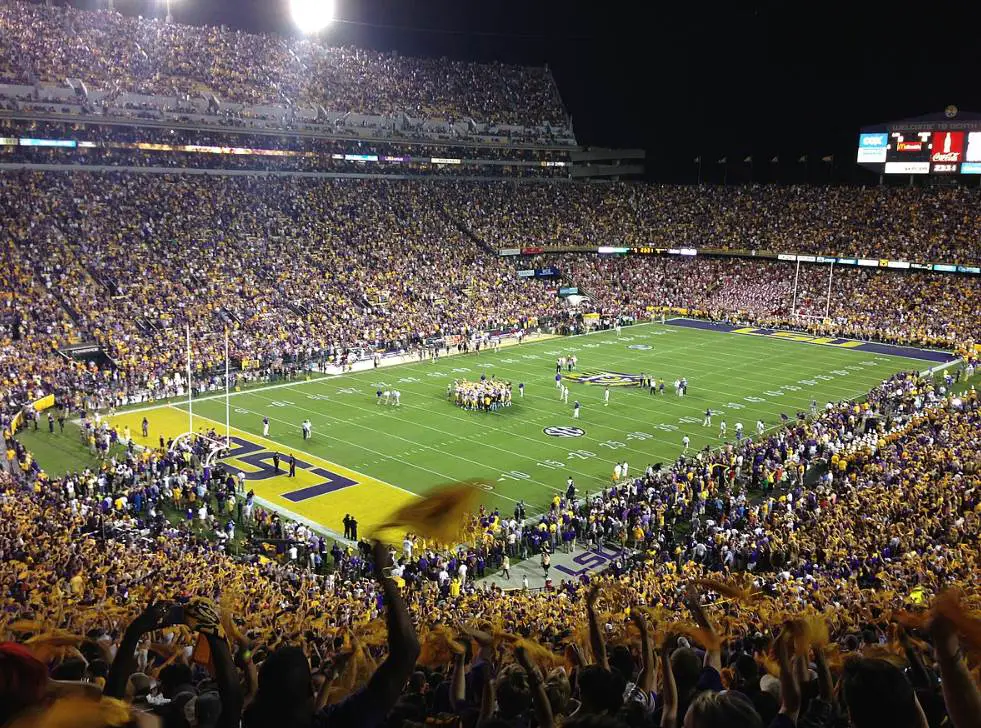
9. A famous LSU Player is honored with a statue in front of the stadium
One of the most legendary moments inside Tiger Stadium happened in 1959, shortly after it became the largest stadium in the SEC.
Billy Cannon scored an 89-yard touchdown against Ole Miss Rebels resulting in a 7-3 win by LSU. It happened at the end of the game and it was the only touchdown scored.
This moment is referred to as “Billy Cannon’s Halloween run” and he was honored with a statue just outside of the stadium.
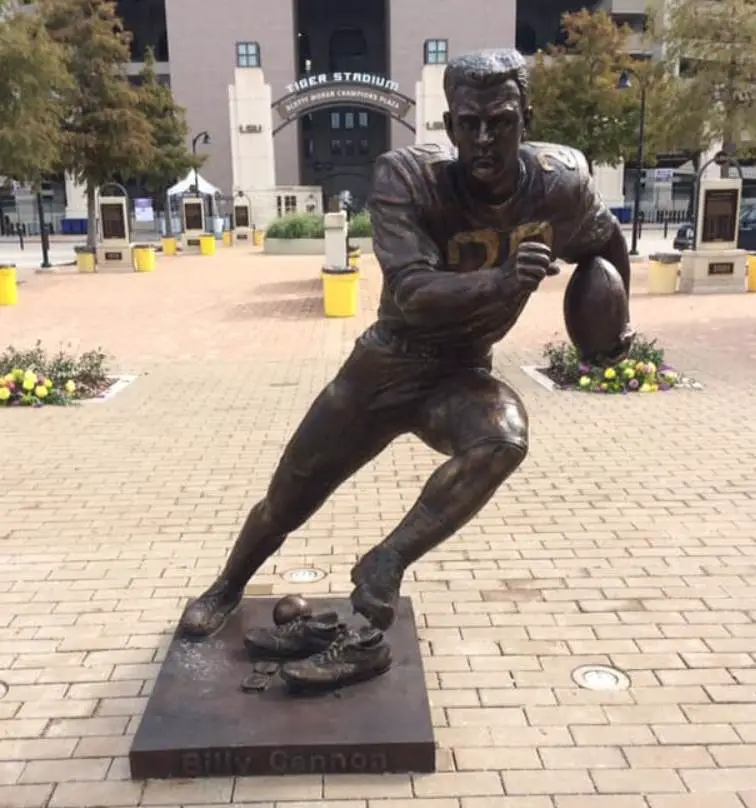
10. Mike the Tiger stands right in front of the Marquee
Mike the Tiger is the mascot of the LSU Tigers. Remarkably, Mike is the name used for both the live Bengal tiger and the costumed mascot that entertains the fans during the games.
A statue of Mike the Tiger stands right in front of the Marquee in Champions Plaza, not too far away from that of Billy Cannon.
